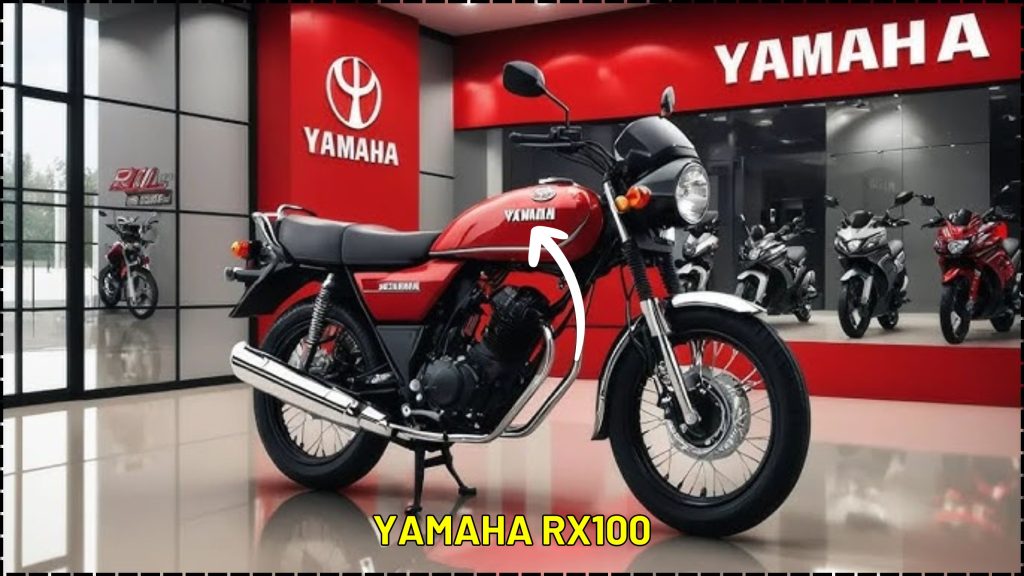
The Yamaha RX100 is more than just a motorcycle, it’s an emotional journey. For many Indians, this iconic two-wheeler evokes memories of freedom, speed, and unmistakable engine roars. Originally launched in the mid-1980s, the Yamaha RX100 carved out a unique space in the Indian biking culture. Even decades after being discontinued, it remains a legend. And now, in 2025, Yamaha has decided to breathe new life into this classic icon, retaining its soul while giving it a refreshed, road-ready form.
In this article, we dive into the Yamaha RX100’s glorious past, the reasons for its enduring popularity, and the exciting developments surrounding its new comeback.
The Glorious Past of the Yamaha RX100
When the Yamaha RX100 first hit Indian roads in 1985, it didn’t take long to become a cult favorite. At a time when most 100cc bikes were content with modest performance, the RX100 came roaring in with raw power, aggressive styling, and unmatched agility. It wasn’t just a machine, it became an identity for the youth.
The 98cc two-stroke engine, capable of producing around 11 horsepower, might not sound groundbreaking today, but paired with a feather-light frame weighing just 100 kg, it made the RX100 a true pocket rocket. Its quick throttle response and torque-heavy engine made it a dream for drag races and quick dashes through urban streets.
But perhaps its most iconic feature was its exhaust note, a sharp, raspy buzz that became music to every motorhead’s ears. The RX100 wasn’t quiet or refined. It was raw, loud, and full of character, just the way riders loved it.
Key Specifications of the Original RX100
| Feature | Details |
|---|---|
| Engine | 98cc, air-cooled, 2-stroke |
| Power | Around 11 HP |
| Gearbox | 4-speed manual |
| Weight | ~100 kg |
| Top Speed | ~100 km/h |
| Brakes | Front & rear drum brakes |
| Fuel Efficiency | 25–30 km/l (depending on tuning) |
| Suspension | Telescopic (front), Swingarm (rear) |
| Production Years | 1985–1996 |
| Legacy | Cult classic with legendary engine sound |
Why the Yamaha RX100 Became a Legend?
The RX100’s popularity wasn’t accidental. It was a result of careful engineering and Yamaha’s commitment to performance over everything else. Where other bikes in the 100cc segment focused on mileage, the RX100 was built for thrill-seekers.
Some of the reasons it became a favorite include:
- Power-to-weight ratio: The lightweight body and high-revving engine made it extremely fast off the line.
- Handling: It could dart through traffic with ease, making it perfect for both city and rural roads.
- Mod-friendly design: Riders loved modifying their RX100s with expansion chambers, port jobs, and other tweaks to unlock more performance.
- Timeless styling: With a round headlamp, bold tank graphics, flat seat, and chrome detailing, the RX100 had a clean, rugged charm that still holds appeal.
The Design That Refused to Age
One of the most remarkable things about the Yamaha RX100 is how its design remains relevant. It wasn’t flashy, but it was functional and bold. The upright seating posture, flat handlebars, and clean body lines made it an all-day comfortable ride.
In today’s world of digital dashboards and aggressive fairings, the RX100’s minimalistic approach feels refreshing. It is the epitome of “less is more.”
Why the RX100 Was Discontinued
Despite its fan following, Yamaha had to pull the plug on the RX100 in 1996. The reason? India began implementing stricter emission norms, and the two-stroke engine of the RX100 couldn’t meet the new regulations. Yamaha tried replacing it with four-stroke successors like the RX135 and RXZ, but none matched the magic of the original RX100.
This made the bike even more desirable—rare, raw, and irreplaceable.
RX100 in 2025: Is It Making a Comeback?
While Yamaha hasn’t officially reintroduced the RX100 with the same two-stroke heart, there’s growing buzz around a new retro-styled motorcycle inspired by the RX100. According to reports and whispers from insiders, Yamaha is planning to bring back the RX100’s design language in a cleaner, BS6 (Bharat Stage 6) compliant avatar.
What Can You Expect from the New Yamaha RX100-Inspired Bike?
While it won’t be a two-stroke screamer, Yamaha aims to retain much of the old-school charm while making the bike road-legal and environmentally friendly. Expected highlights include:
- Classic round headlamp and analog meters
- Retro fuel tank and chrome elements
- Modern 100–125cc four-stroke engine
- Enhanced fuel efficiency—up to 50 kmpl
- Improved suspension and disc brakes for safety
- Refined yet throaty exhaust note
In essence, Yamaha wants to offer the spirit of the RX100 with modern engineering.
Buying an Original RX100 in 2025: What You Need to Know
If you’re a purist, you might still want to own the original RX100. Thankfully, it’s not impossible. Many well-maintained or restored RX100s are available in the second-hand market.
Here are some tips if you’re planning to buy one:
- Check authenticity: Ensure original parts like the engine, carburetor, and exhaust are intact.
- Restoration costs: Factor in the cost of re-chroming, engine rebuilds, and paint jobs.
- Market price: Basic fixer-uppers start at ₹40,000, while showroom-quality restorations can cost ₹1 lakh or more.
- Registration and legality: Make sure the bike is properly registered and passes local emission tests. In some cities, older vehicles are restricted.
Final Thoughts: A Motorcycle That Still Roars in Our Hearts
The Yamaha RX100 was never just a bike—it was a movement. It represented a generation of riders who valued raw performance over practicality. In today’s age of electronics and efficiency, the RX100 reminds us of a time when riding was about connection, feeling, and pure mechanical joy.
Whether you’re restoring an old RX100 or eagerly waiting for Yamaha’s retro-modern revival, one thing is clear—the RX100’s legacy isn’t fading anytime soon.
Would you want the RX100 to return exactly as it was, or are you excited about a modern version with classic design cues? Let us know—and keep the legend alive.

Mangesh garg is a passionate writer known for captivating stories that blend imagination and reality. Inspired by travel, history, and everyday moments, He crafts narratives that resonate deeply with readers.



